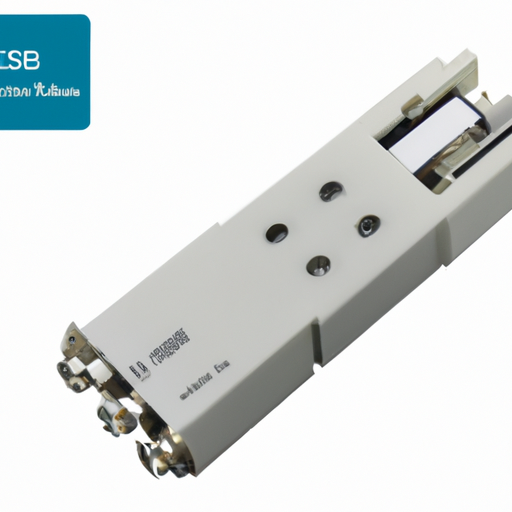
In modern electronic circuits, resistors are essential basic components. They are used not only to limit current and divide voltage, but also play important roles in signal processing, filtering, and feedback control. Choosing the right resistor model is crucial to ensure the stability and performance of the circuit. This article aims to compare and analyze mainstream resistor models to help readers better understand the characteristics of different resistors and their suitable applications.
A resistor is an electronic component that can limit the flow of current. Its main function is to provide a specific resistance value to control the current and voltage in the circuit. The working principle of resistors is based on Ohm's Law, which states that current is directly proportional to voltage and inversely proportional to resistance.
The basic parameters of resistors include:
Resistance Value: The resistance value of the resistor, usually measured in ohms (Ω).
Power Rating: The maximum power that the resistor can handle, usually measured in watts (W).
Accuracy: The deviation between the resistance value of the resistor and the nominal value, usually expressed as a percentage.
Resistors can be classified based on their structure and function, including:
Fixed Resistors: Resistors with a fixed resistance value, widely used in various circuits.
Variable Resistors: Resistors with adjustable resistance, commonly used in volume control and tuning circuits.
Special Resistors: Such as thermistors, photoresistors, etc., with specific functions.
In the market, there are various types of resistors to choose from. Here is an overview of several mainstream resistor models:
Carbon film resistors are fixed resistors made of carbon film, with low cost and wide applicability.
Metal film resistors use metal oxide as the resistive material, with good stability and low temperature coefficient.
Ceramic resistors are made of ceramic material, with high temperature and corrosion resistance, suitable for use in harsh environments.
Thin film resistors are manufactured using thin film technology, with high precision and stability, suitable for precision measurements.
Thick film resistors are made of thick film material, with high power handling capacity and low cost, suitable for use in power circuits.
Precision resistors have extremely high accuracy and stability, commonly used in research and laboratory equipment.
Characteristics: Low cost, wide applicability, suitable for general electronic devices.
Applications: Widely used in consumer electronics, household appliances, and other fields.
Characteristics: Good stability, low temperature coefficient, suitable for high-precision circuits.
Applications: Commonly used in audio equipment, measuring instruments, and other high-demand applications.
Characteristics: High temperature resistance, corrosion resistance, suitable for use in extreme environments.
Applications: Widely used in industrial equipment and circuits in high-temperature environments.
Characteristics: High precision, high stability, suitable for precision measurements.
Applications: Commonly used in medical equipment, precision measuring instruments, and other fields.
Characteristics: High power handling capacity, low cost, suitable for high-power applications.
Applications: Widely used in power circuits, power amplifiers, etc.
Characteristics: Extremely high accuracy and stability, suitable for scientific research and laboratory use.
Applications: Commonly used in high-precision measurements and laboratory equipment.
Accuracy: Precision resistors and thin film resistors have the highest accuracy, suitable for high-demand applications; carbon film resistors have relatively lower accuracy.
Temperature Coefficient: Metal film resistors have the lowest temperature coefficient, suitable for use in environments with large temperature variations; ceramic resistors perform well in high-temperature environments.
Power Handling Capacity: Thick film resistors and ceramic resistors have strong power handling capacities, suitable for high-power applications.
Production Cost: Carbon film resistors have the lowest production cost, suitable for mass production; precision resistors have higher production costs.
Market Price: The market prices of carbon film resistors and thick film resistors are relatively low, while the prices of metal film resistors and thin film resistors are higher.
Applicable Types of Electronic Products: Carbon film resistors are suitable for general consumer electronics, metal film resistors are suitable for high-precision devices, and ceramic resistors are suitable for industrial equipment.
Environmental Adaptability: Ceramic resistors and metal film resistors perform well in harsh environments, while carbon film resistors may not be suitable in high-temperature and humid environments.
When choosing a resistor, it is recommended to consider the following points:
1. **Select the Resistor Model Based on Application Requirements**: Choose the appropriate resistor type based on the specific requirements of the circuit, such as accuracy, power, and temperature coefficient.
2. **Consider Environmental Factors**: In high-temperature, high-humidity, or corrosive environments, choose resistors that are resistant to high temperatures or corrosion.
3. **Evaluate the Balance Between Cost and Performance**: Choose resistors that offer high performance at a reasonable cost.
With the advancement of technology, the materials and technologies of resistors are constantly evolving. The application of new materials will improve the performance and stability of resistors. Additionally, the trend towards intelligence and automation will also impact the selection of resistors. In the future, more intelligent resistors may emerge that can automatically adjust resistance values based on real-time circuit requirements.
Through the comparison and analysis of mainstream resistor models, we can see the differences in performance, cost, and application scenarios of different resistors. Choosing the right resistor is crucial to ensure the stability and performance of the circuit. We hope readers can make wise choices based on specific requirements to improve the overall performance of electronic products.
- "Fundamentals of Electronic Components", Author: Zhang San
- "Selection and Application of Resistors", Author: Li Si
- Related Website Links: Online Electronic Components Store, Electronic Engineers Forum, etc.
The above is a detailed analysis of the comparison and differences of mainstream resistor models, hope it is helpful to you.